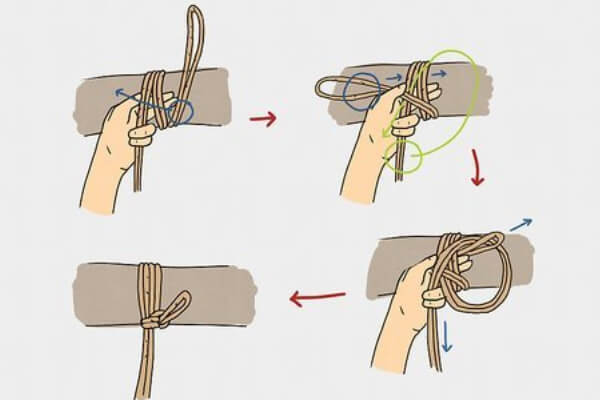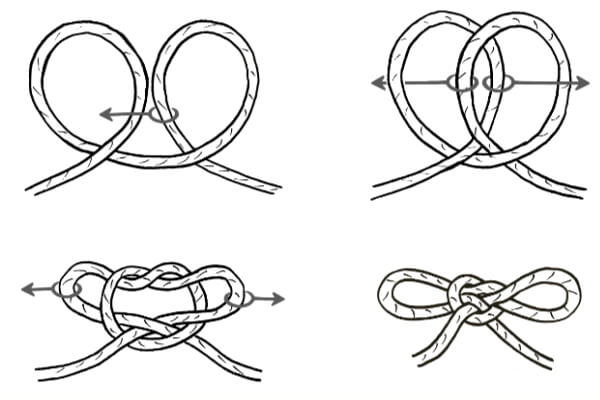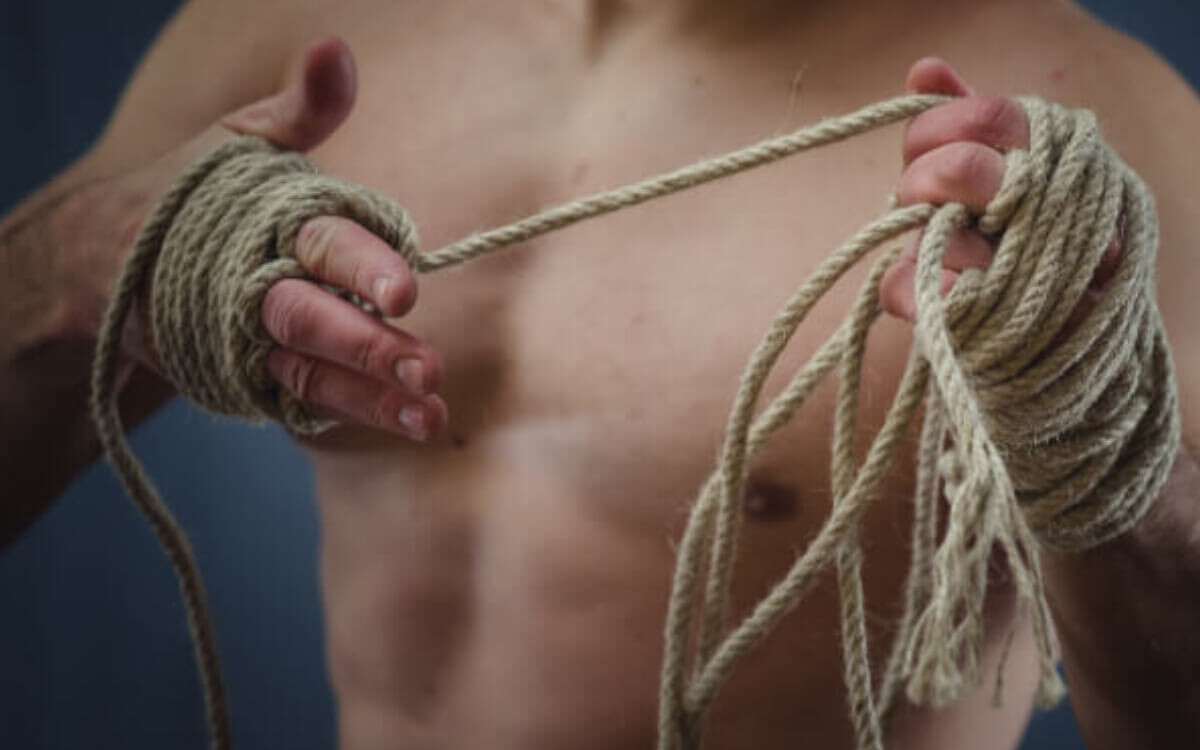What bondage knots are there for beginners & what else is there to consider? If you’re just starting out in the world of bondage techniques, it’s important to learn and familiarise yourself with simple bondage knots. Here is a short bondage knot guide that you can try out to get a feel for this exciting practice. And learn to tie up your lover.
3 knots please
A simple bondage knot is to tie your partner’s wrists. You can tie the wrists either in front of or behind the body. Depending on what is comfortable for both of you. Use a soft rope or special restraints to secure the wrists, but not too tightly. Similar to tying up the wrists, you can learn to tie up your partner’s legs or parts of them, such as the ankles or knees. As a first attempt to restrict their mobility. Make sure that the restraints are not too tight so as not to impair blood circulation.
Another bondage knot is to tie your lover to a chair. Sit him on the chair, preferably naked, and tie his wrists to the back of the chair and his ankles to the legs. This way, he won’t be able to deny himself to you. And you’ll have him at your mercy to stimulate his various erogenous zones.
In the Spread Eagle position, your willing and submissive lover lies on his back or stomach. And his arms and legs are spread and attached to the corners of the bed or another surface. So that you can use him to your heart’s content for your pleasure. Make sure your partner is lying comfortably and use soft restraints or ropes to avoid pressure points or injuries.
You can use a gag, alongside the bondage rope technique, to put something different in his mouth for a change. And to limit your lover’s verbal communication and add an extra dimension of control. Make sure to choose a gag that is suitable for beginners. Such as a soft ball gag or a cloth gag. Make sure your willing lover can breathe easily at all times. And agree on a non-verbal safety signal if they want the gag removed.
Learning bondage knots – with these prerequisites
This is aimed at both tops and bottoms, as knowledge, awareness and communication are equally relevant. Unfortunately, it is impossible to completely avoid all risks. It is therefore crucial to act consciously and proactively, to consider the possible consequences of one’s own behaviour in advance, and to be prepared to deal with dangerous situations in the best possible way. For example, never tie bondage knots on the neck, groin or face. You should also avoid bondage knots on the spine, as they could press on it.
There are ten important rules of thumb to follow:
- Trust your rope partner with all your heart.
- Set clear boundaries before each training session and discuss them in detail.
- Be aware of your skills, knowledge and common sense.
- Spontaneous tying is not a good idea – always take enough time for it.
- Don’t tie up if you are tired, under the influence of alcohol or drugs or ill – it’s not safe.
- Give your partner honest feedback to improve the experience for both of you.
- If you have a bad feeling, something is wrong. Tell your partner immediately.
- Never leave your sub/bottom/bound alone – safety is paramount.
- Always have an emergency pair of scissors ready so that you can cut the rope quickly if necessary.
- Make sure that bondage is always an enjoyable and positive experience – respect your partner’s needs and wishes.
Learning and practising bondage knots is not just a question of technique, but should also be characterised by trust, communication and safety. By fulfilling these requirements and being aware of the risks and limitations, we can create an enriching and fulfilling bondage experience. It is important to always be attentive, respond to your partner’s needs and put safety first.
Cuffing techniques – How can you learn them? – Tips, tricks and a quick guide
The first bondage knot you should learn is the single column tie. The basis of bondage is to connect the different columns of the human body with each other. These pillars are the arms, wrists, torso and legs. The single column tie refers to the binding of a single column, whether it is a wrist, a leg, the torso or another part of the body. This technique forms the basis for many other restraints and offers scope for artistic design, restraint techniques or other focal points, depending on what you want to focus on.

Restrictions: If you tie two extremities together, for example two wrists, it is relatively easy for your partner to free the wrists from the strap (which may sometimes be desired). To make this safer, we recommend using a strap with two strands.
Cuffing hands with a bondage handcuff knot
With the help of this bondage knot, you can create a kind of handcuff for your willing victim from a rope. It allows you to create two adjustable loops that point in opposite directions and are secured in the centre. These loops can be placed around the hands or feet of your sub. However, this alone is not enough to secure it. To do this, the ends of the rope used must also be secured with a suitable knot to ensure a firm and stable hold. However, it should be noted that the knot tightens under tension and can lead to circulatory problems. For this reason, this knot is only suitable for gentle bondage practices where no high pressure is exerted on the handcuffs.

Master of knots: A Concluding Look at the Art of Bondage
If you look closely, you’ll realise that there’s more to bondage than just wildly using knots to tie someone up. It is important to make sure that the knots do not tighten too much under tension and that you can release them quickly in an emergency. When tying the knots, it is important not to pull the rope at high speed over the skin of your bound lover, as this can lead to painful burns. The basic bondage knots are actually not that difficult. Once you’ve tried them out a few times, you’ll get the hang of it. Remember: practice makes perfect!
In addition, there are different variations of the knots that you can discover to add more variety and excitement to your bondage games. For example, you can try out the Simple Double Column Tie, which creates two parallel loops and provides a stable basis for further games. The Somerville Bowline knot, on the other hand, allows you to create a secure loop that does not tighten unintentionally. For those who want to get a little more creative, the Larks Head knot is an excellent choice for tying ropes together or attaching accessories such as handcuffs or blindfolds.
Playing with bondage knots requires not only technical skill, but also a high level of trust and communication with your partner. It is important that you are always aware of how your partner feels during the bondage game and whether he/she feels comfortable and safe. A safe word or sign to stop the game or adjust the intensity should be agreed in advance.
|
